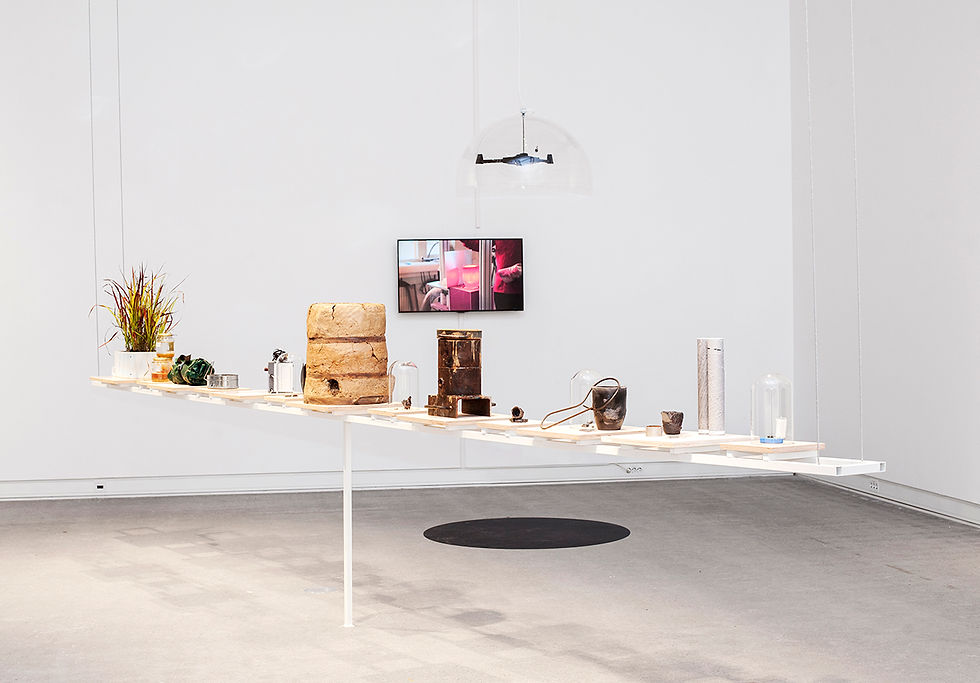
© 2013 Cecilia Jonsson / photo: Stina Glømmi

HARVEST, lmperata cylindrica grass, wooden crate, tarpaulin, soil © 2013 Cecilia Jonsson / photo: Carina Hesper

THE IRON RING (video still) © 2013 Cecilia Jonsson

© 2013 Cecilia Jonsson / photo: Stina Glømmi
THE IRON RING
2013
Mixed media installation
Imperata cylindrica grass, iron artefacts from the evolution steps, HD–video
/
Developed with the support of Production Network for Electronic Art (PNEK), V2_ Institute for the Unstable Media and the Arts Council Norway.
Special thanks to Linda Tulldahl, Silvia Czaia and Antonio Serrano, Laboratory Services International, Eric Hulsman, Thijs van de Manakker, Marnix de Nijs, Eva Brita Åkerlund and Odd B. Gaustad at Rolls-Royce Bergen Foundry and Toni Bogdanoff and Esbjörn Ollas of the School of Engineering
at Jönköping University.
While “green mining” aims for a more ecological approach to mining metals, The Iron Ring explores how contaminated mining grounds may benefit from the mining of metals. For 'The Iron Ring',
24 kg of iron-tainted grass was removed from contaminated mining grounds and transformed into a ring of 2 g metallic iron.
Iron is considered very important to life in general and has a lower toxicity than other metals. Extensive or abandoned metal mines and industrial activities have, however, caused metal releases into the ecosystem to accelerate and reach toxic levels. So-called iron hyper-accumulating plants are tolerant to inorganic iron and can grow on these degraded grounds. There they extract the metal from the soil to store it in very high concentrations inside their roots, stems and leaves. The means of "cleaning" the polluted soil however, is a periodical commitment that relies on human interaction: harvest. The plants' metal enriched biomass (in other words, their contaminated biological materials) needs to be removed from the ground before the plants by season wilt and the extracted metal reverts back to the soil. So that after the harvest is removed, new sprouts can grow to continue the decontamination process.
The project elaborates on the possibilities to utilise the cleansing process of the naturalised, wild growing grass: Imperata cylindrica. An invasive vile weed, which overlooked tolerance and ability to hyper accumulate iron inside its roots, stems and leaves are left un-utilised. 'The Iron Ring' proposes to harvest the grass for the purpose of extracting the ore that is inside them. The result is a scenario for iron mining that, instead of furthering destruction, could actually contribute to the environmental rehabilitation of abandoned metal mines.
'The Iron Ring' installation takes a visitor through the project’s trials and failures, in a process of close collaboration with smiths, scientists, technicians and farmers met along the way. The installation
consists of artefacts and video documentation that reports on the seven chronological steps that were required to create an iron ring out of 24 kg of grass harvested from the acidic river banks of a landscape in Spain severely transformed by opencast mining.